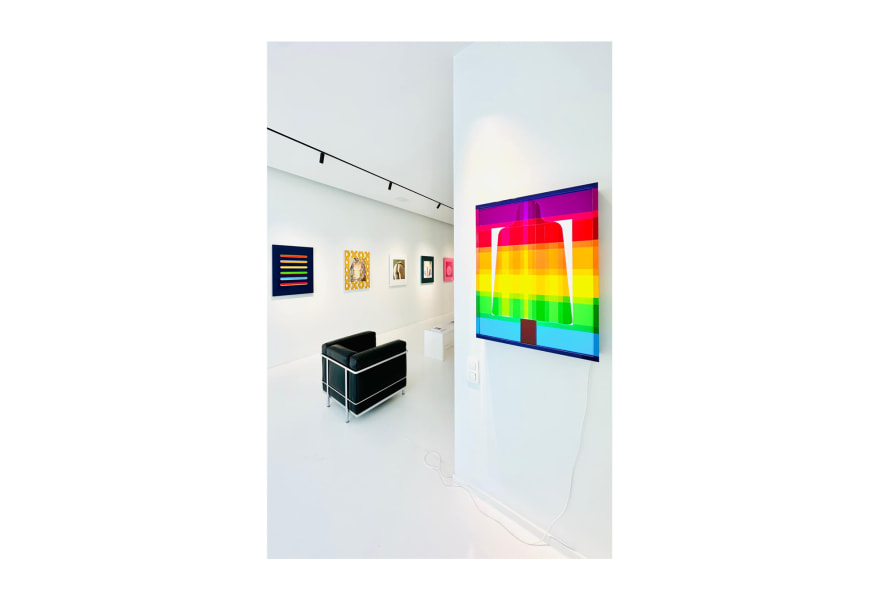18 september 2023, Yves Joris
Looking for the right ratio with Tom Woestenborghs
Can abstract work synergise with figuration? And can both forms be made with the same passion and power by one artist? With his first solo exhibition at Art Gallery De Wael 15 in Belgium, Tom Woestenborghs, 45, proves that his work is more than a mere formality.
Formality, the title of the exhibition, radiates the same playful ambiguity as his work. After all, isn't he playing with the double meaning of the word, which in Dutch can mean both formality and etiquette?
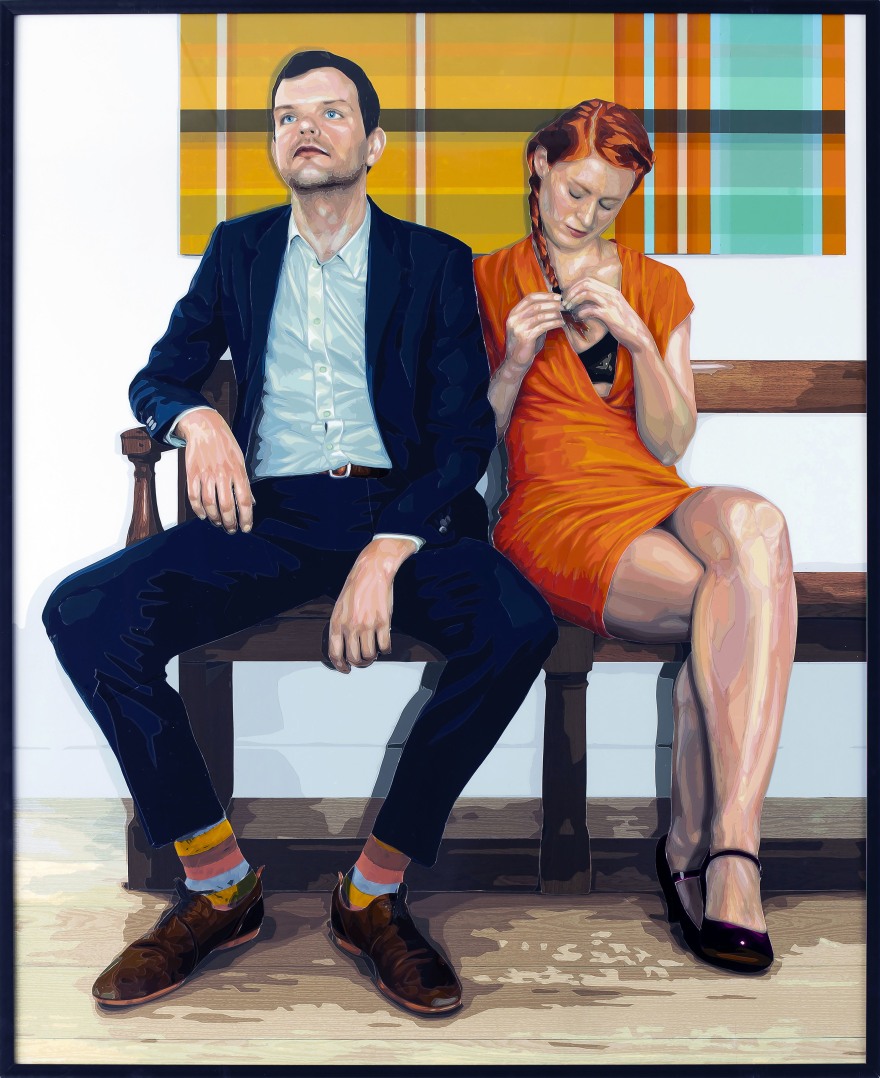
Tom Woestenborghs, Wouter & Nicole, 2023, Art Gallery De Wael 15
Woestenborghs, who lives and works in Merksplas, uses photography as the basis for his collages, which in turn resemble photographs. This degree of realism in his work is undoubtedly due in part to his holding a Master’s degree in painting from St. Lucas and a postgraduate degree from HISK. Despite his training, Woestenborghs has traded paint and brush for a cutting knife and adhesive plastic, because – in his own words – this material produces a brighter colour palette than paint.
From playful pop art…
The works of art in the exhibition space alternate between playful pop art figures and clearly defined geometric patterns. From a distance, two things are immediately noticeable: the bright colours that make up the work and the size of his work. In Formality, Woestenborghs also explores the relationship between the work and its frame, with the central image measuring 40 x 50 cm, while the frame around it measures 60 x 80 cm. The artist asks himself how they relate to each other and whether one influences the other.
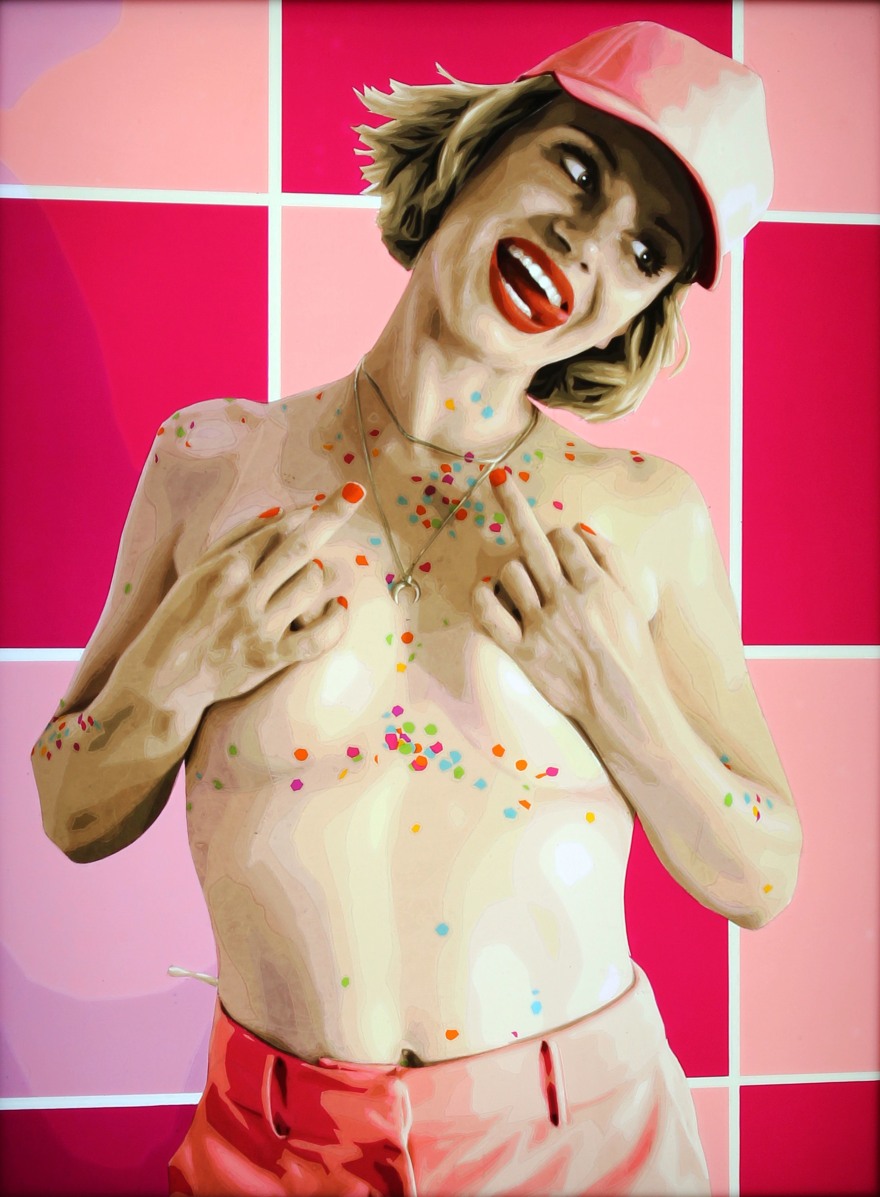
Tom Woestenborghs, A shameless 90s re-enactment AKA confetti sprinkled dubbel fuck you, 2023, Art Gallery De Wael 15
This question is irrelevant to me. In the figurative work, I want to focus on formality, but in the sense of etiquette. After all, the people depicted in Woestenborghs' oeuvre do not stand out because of their refined posture or clothing; at first glance, the lady on the exhibition poster could easily be the daughter of Cameron Diaz and a young Madonna (the pop star): rebellious, provocative, even a bit mischievously erotic. She does not look the viewer in the eye. She averts her gaze, but holds our attention by sticking out her tongue. It is not offensive, but has a certain erotic tension. She covers her naked bosom with her hands while giving us the middle finger, a gesture that almost threatens to get lost in the image because the red-painted fingernails barely contrast with the coloured glitter on her body. The space in which the woman is standing cannot be defined, but the geometric background is reminiscent of the bathroom tiles from the middle of the last century. Another example shows us a tattooed girl sitting on the counter of a kitchen that seems to have escaped from the mind of Mondriaan or Van Doesburg. Again, we see playful innocence, an averted gaze and covered nudity against a geometric background.
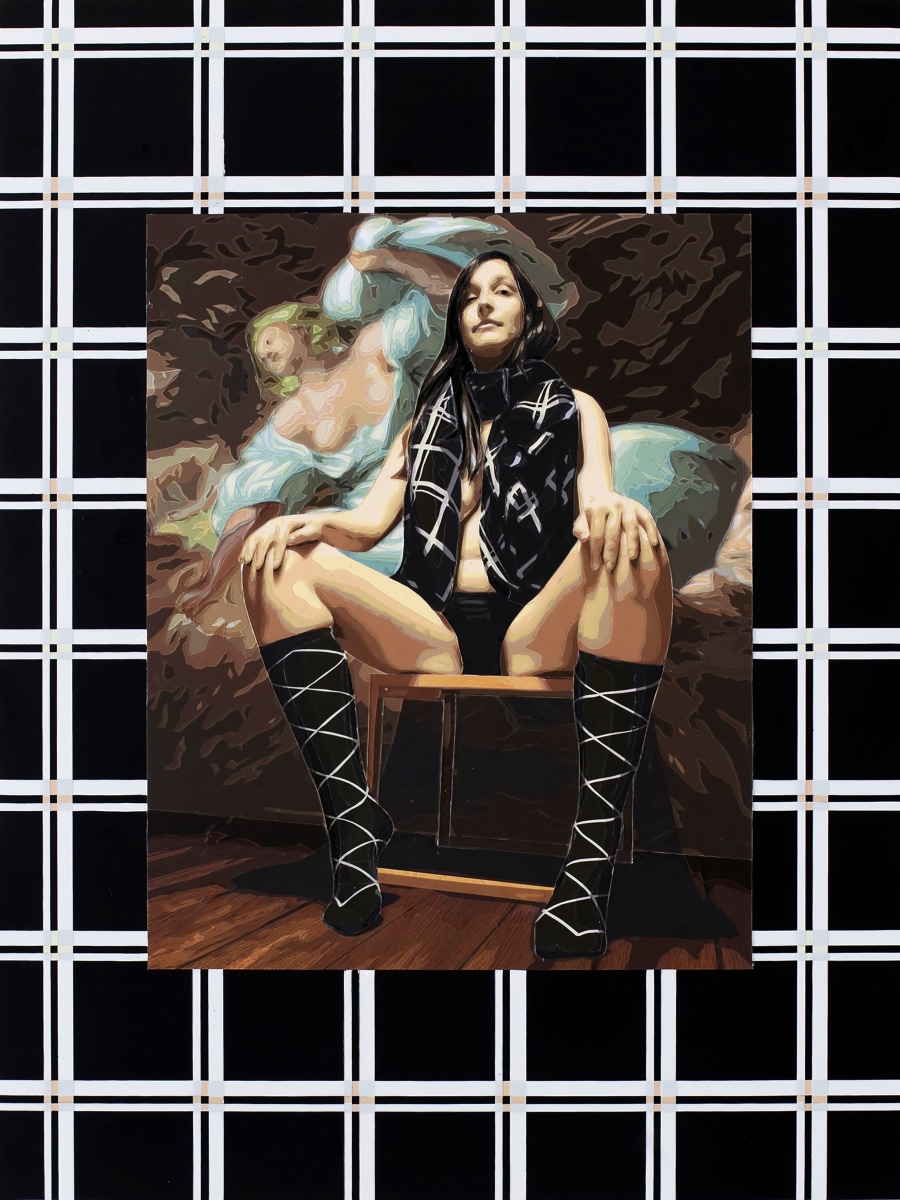
Tom Woestenborghs, Pillow talk, 2023, Art Gallery De Wael 15
… to geometric formalism
When the artist turned 40, he decided to devote an entire year to his work process and not the result. I can well imagine that the seed for the non-figurative works in this exhibition was planted around that time: an austere aesthetic that weaves its way between Mondriaan, Van Doesburg and even Josef Albers and decisive proof that the artist knows his canon.
The conclusion? Formality is more than just an exhibition: It is a study of form, colour and composition, and a celebration of Woestenborghs' versatility as an artist and his ability to master different styles and techniques. In other words, an exhibition that is definitely worth visiting.
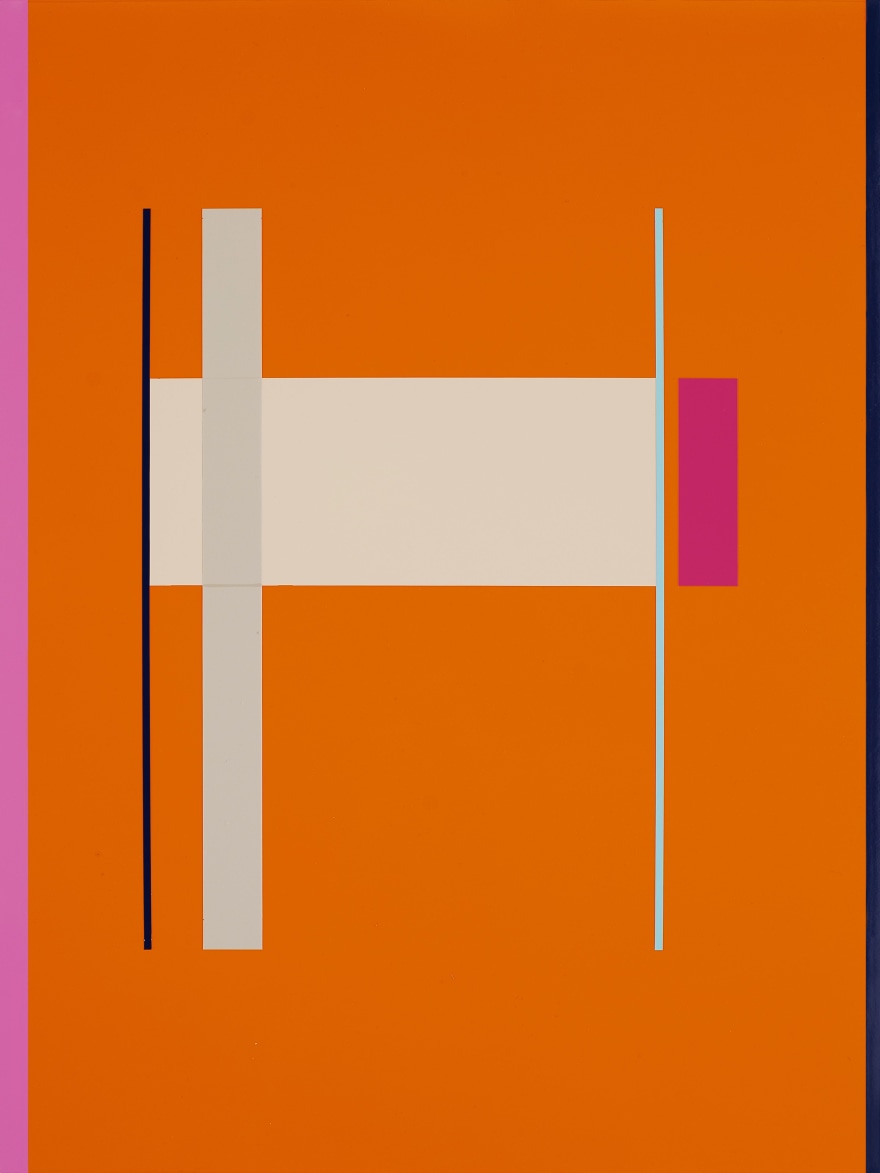
Tom Woestenborghs, Abstract composition orange, 2023, Art Gallery De Wael 15
